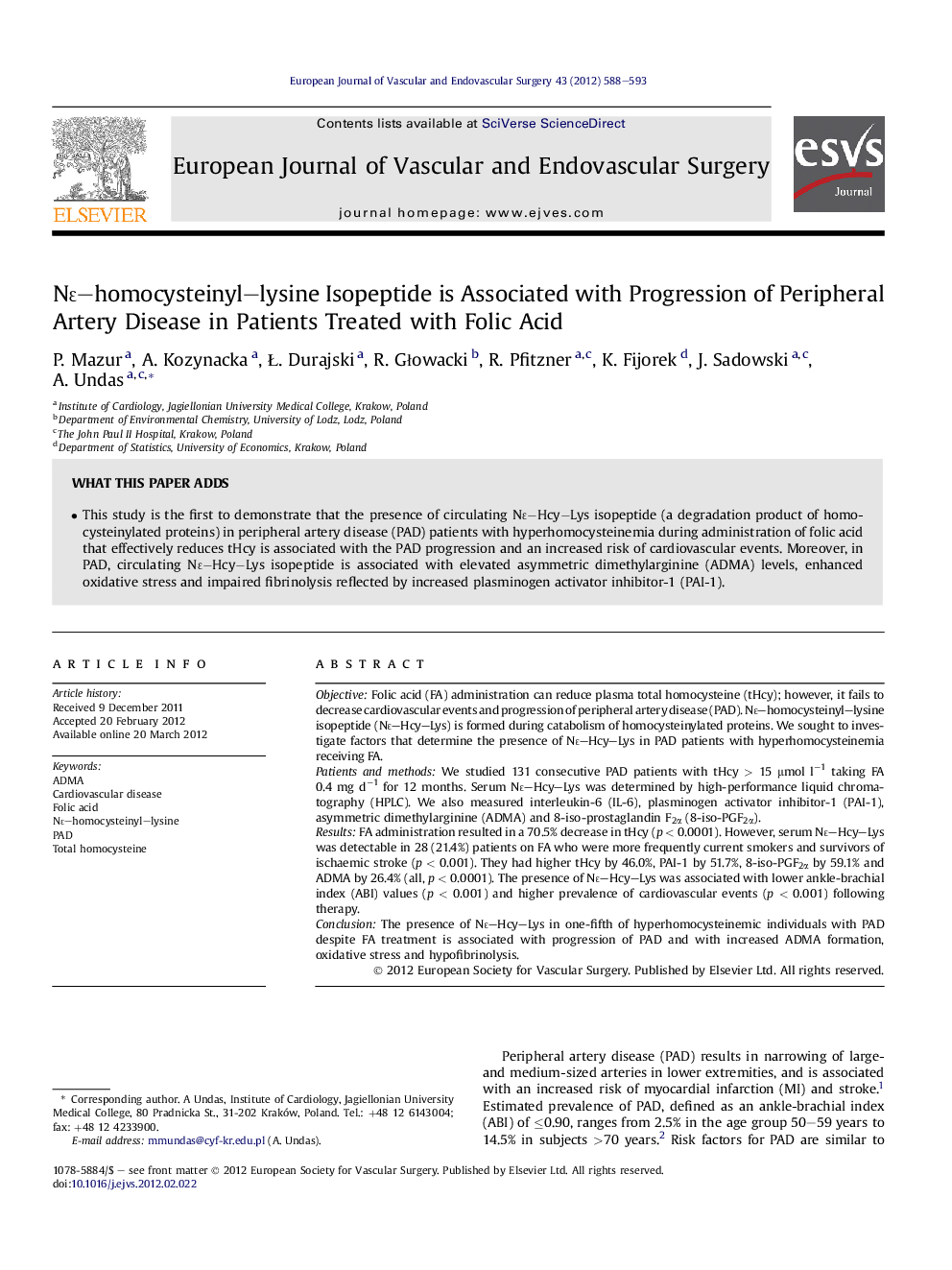| Article ID | Journal | Published Year | Pages | File Type |
|---|---|---|---|---|
| 2912973 | European Journal of Vascular and Endovascular Surgery | 2012 | 6 Pages |
ObjectiveFolic acid (FA) administration can reduce plasma total homocysteine (tHcy); however, it fails to decrease cardiovascular events and progression of peripheral artery disease (PAD). Nɛ–homocysteinyl–lysine isopeptide (Nɛ–Hcy–Lys) is formed during catabolism of homocysteinylated proteins. We sought to investigate factors that determine the presence of Nɛ–Hcy–Lys in PAD patients with hyperhomocysteinemia receiving FA.Patients and methodsWe studied 131 consecutive PAD patients with tHcy > 15 μmol l−1 taking FA 0.4 mg d−1 for 12 months. Serum Nɛ–Hcy–Lys was determined by high-performance liquid chromatography (HPLC). We also measured interleukin-6 (IL-6), plasminogen activator inhibitor-1 (PAI-1), asymmetric dimethylarginine (ADMA) and 8-iso-prostaglandin F2α (8-iso-PGF2α).ResultsFA administration resulted in a 70.5% decrease in tHcy (p < 0.0001). However, serum Nɛ–Hcy–Lys was detectable in 28 (21.4%) patients on FA who were more frequently current smokers and survivors of ischaemic stroke (p < 0.001). They had higher tHcy by 46.0%, PAI-1 by 51.7%, 8-iso-PGF2α by 59.1% and ADMA by 26.4% (all, p < 0.0001). The presence of Nɛ–Hcy–Lys was associated with lower ankle-brachial index (ABI) values (p < 0.001) and higher prevalence of cardiovascular events (p < 0.001) following therapy.ConclusionThe presence of Nɛ–Hcy–Lys in one-fifth of hyperhomocysteinemic individuals with PAD despite FA treatment is associated with progression of PAD and with increased ADMA formation, oxidative stress and hypofibrinolysis.
